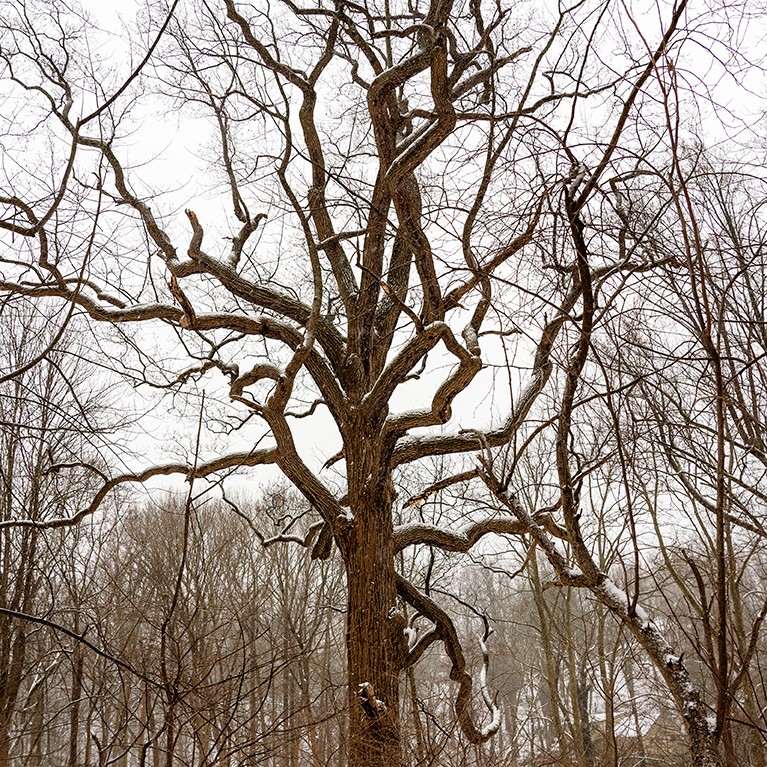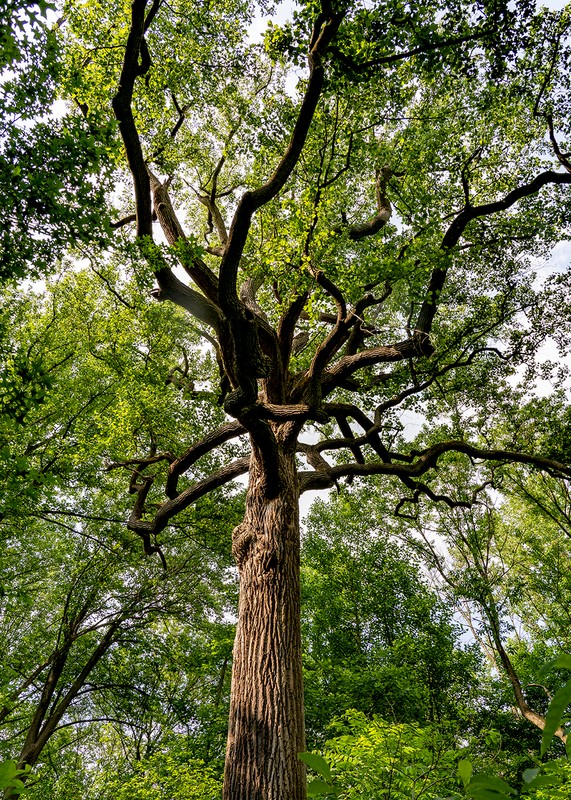Saul Preserve Points of Interest S5 The Wolf Tree
Introduction
Text-to-speech Audio
Proceed from the Old Mill Trail about 400 feet up the Wolf Tree Trail. Look up and above you to the right, at a very tall and uniquely shaped tree with wide branches, towering over most other trees in the woods. This is The Wolf Tree, the only one of its kind in the Saul Preserve. These trees were planted before the forest, are very old, and now an important part of the woodland ecology,
Images
Saul Preserve Wolf Tree in Winter

Saul Preserve Wolf Tree in Summer

Backstory and Context
Text-to-speech Audio
Wolf trees are named for lone wolfs. They now provide a safe home for many birds, small animals including mammals, and various insects. They also tell a story of earlier times and the history of a place.
The Wolf Tree in the Saul Preserve measure 13.75' in circumference, a 52.5 " diameter. Using a Tree Age Calculator, with a growth factor of three for Tulip trees, the tree is approximately 157 years old. It would have germinated just after the Civil War during the time Antrim Osbourne was restoring the mill dam and mill race to build his woolen mill nearby. Local legends recall a cabin just to the north, with the tulip tree providing shade, but no remains have been found. Some older residents know it as the princess tree.
Dr. Roger Latham, an ecologist and conservation biologist, was the 2008 founder and past chair of the Rose Valley Environmental Advisory Council, and still very active in the organization. During an annual work day, he gives a walking tour for those interested in learning about the Saul Preserve and efforts to reduce invasive species and bring the woods back to native health. On May 14, 2022 he featured The Wolf Tree on his tour. He identified it as a tulip, not related to poplars but in the magnolia family, with large tulip-like flowers, blooming in the spring.
Invasives like garlic mustard, knotweed, multiflora rose, Japanese honeysuckle and Norway maple have no natural enemies to keep them in check. As they spread, they disrupt the forest's natural life processes because they do not support the food and habitat needs of native micro-organisms, insects, birds and wildlife. As the EAC removes Invasives, they are adding native trees, shrubs and herbaceous plants to restore the Preserve's ecology.
Sources
Latham, Dr. Roger. Saul Preserve Nature Walk, May 14th, 2022.. https://youtu.be/bNUJA8NrxIY.
Ron Ploeg
Ron Ploeg
